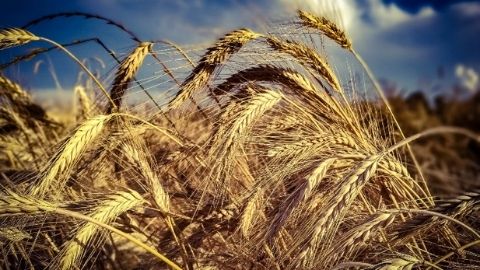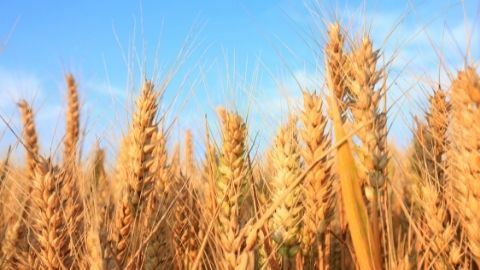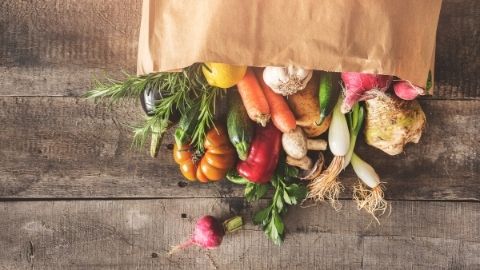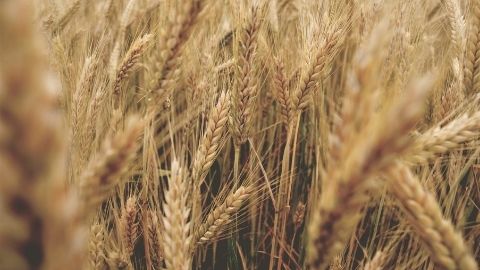Livestock Risk Protection Insurance: Fed Cattle

What are the specifics about fed cattle insurance?
Within the Livestock Risk Protection (LRP) insurance program, fed cattle are not separated by gender. Fed cattle typically range from 1,000 to 1,600 pounds on average, with the marketing month for slaughter varying based on operational needs, demand, and other market conditions. Fed cattle specific coverage endorsements (SCE) for LRP insurance may be purchased with an annual limit of 25,000 head for an individual producer per year, with a maximum per SCE of 12,000 head (Risk Management Agency [RMA], 2022). While that is the maximum per contract, producers can purchase LRP insurance contracts for as little as one head. Find general information about how the LRP insurance program works in the companion Utah State University Extension fact sheet titled “Livestock Risk Protection Insurance FAQ.”
What are the "optimal" coverage contracts?
LRP contracts that return an indemnity to a producer greater than the subsidized premium cost could be defined as having a positive net return. Those combinations of coverage length and level that have historically provided the highest probability of a positive net return while also providing the highest average net return could be defined as “optimal” contracts (Haviland & Feuz, 2022). Table 1 summarizes these optimal contracts for each marketing month (the month in which a producer intends to market livestock). LRP coverage lengths of 13, 17, 21, 26, and 30 weeks are shown, with coverage levels of 85%–100% split into 5 groups:
- 1 = (85.00% - 89.99%).
- 2 = (90.00% - 92.49%).
- 3 = (92.50% - 94.99%).
- 4 = (95.00% - 97.49%).
- 5 = (97.50% - 100.00%).
The optimal contracts, already defined, are those cells within Table 1 shaded in gray and marked with an “X.”
An online tool, Livestock Risk Protection (LRP) Support Tool (https://farmanalysis.usu.edu/lrp/), is available to help producers visualize which contracts are optimal based on their marketing month and specific commodity. The optimal contracts identified within Table 1 may not correspond directly to those identified using the LRP online decision tool. This discrepancy can arise as the online tool is continuously updated as new LRP data becomes available.
|
Table 1. LRP Fed Cattle “Optimal” Combinations of Coverage Length and Level by Marketing Month |
||||||||||||
|
Coverage length/levela |
Jan. |
Feb. |
Mar. |
Apr. |
May |
Jun. |
Jul. |
Aug. |
Sep. |
Oct. |
Nov. |
Dec. |
|
13/1 |
||||||||||||
|
13/2 |
||||||||||||
|
13/3 |
X |
|||||||||||
|
13/4 |
X |
X |
||||||||||
|
13/5 |
X |
X |
X |
X |
||||||||
|
17/1 |
||||||||||||
|
17/2 |
||||||||||||
|
17/3 |
X |
|||||||||||
|
17/4 |
X |
X |
X |
X |
||||||||
|
17/5 |
X |
X |
X |
X |
||||||||
|
21/1 |
||||||||||||
|
21/2 |
||||||||||||
|
21/3 |
||||||||||||
|
21/4 |
X |
X |
X |
|||||||||
|
21/5 |
X |
X |
X |
X |
X |
|||||||
|
26/1 |
||||||||||||
|
26/2 |
||||||||||||
|
26/3 |
||||||||||||
|
26/4 |
X |
|||||||||||
|
26/5 |
X |
X |
||||||||||
|
30/1 |
||||||||||||
|
30/2 |
||||||||||||
|
30/3 |
||||||||||||
|
30/4 |
X |
|||||||||||
|
30/5 |
X |
X |
X |
|||||||||
|
Notes. Optimal combinations of coverage length and level are those that have historically provided the highest average net return and highest probability of a positive net return. The optimal combinations are shaded in gray and marked with an “X.” a Coverage length/levels are defined as the length in weeks and the levels coded as 1 = (85.00%–89.99%), 2 = (90.00%–92.49%), 3 = (92.50%–94.99%), 4 = (95.00%–97.49%), and 5 = (97.50%–100.00%). |
||||||||||||
How were the optimal contracts determined?
The optimal contracts are based on historical performance of LRP contracts from 2005–January 2023. The net return and probability of positive net return were analyzed for each combination of coverage length and level and those combinations that were statistically the highest (5% significance level) were taken as the optimal set.
What patterns exist within the optimal contracts?
Patterns within the optimal contracts identified for fed cattle suggest that generally higher coverage levels have historically been more likely to return a positive net return as well as the highest average net return across all marketing months. Patterns within coverage length are far less pronounced. This suggests that producers purchasing fed cattle LRP insurance should prioritize purchasing contracts with relatively higher coverage levels to help mitigate price risk.
Interestingly, the last 4 months of the year (September– December) demonstrate increased numbers of optimal contracts as compared to the other 8 months. Within these last 4 months, the optimal contracts are clustered in the 13–26-week length and 95%-100% levels.
Example
As an example of how the information in Table 1 could be used, assume a feedlot is seeking to manage price risk for fed cattle to be marketed in June. Referencing Table 1, the feedlot manager seeking to purchase a historically optimal contract could purchase a contract for 30 weeks in November, with a coverage level of a 4 or 5 (95%–100%). Of course, having been identified as historically optimal does not guarantee similar future performance. However, as producers make LRP coverage selections, this historically optimal set can provide some ranking information based on historical performance to guide producers in their selection process.
Conclusions
This fact sheet discussed organic wheat grower motivations for adopting organic methods, as well as grower concerns regarding organic production and implementing new technologies. The study found that current organic wheat producers were motivated to adopt organic methods due to the profit potential and personal values at the time of transition. While these producers may be more motivated by altruistic ideals, obviously profitability is also a major concern. Federal or local policies which provide subsidies or other incentives to dampen the financial burden of transition and improve the profitability potential may be effective in increasing the adoption of organic wheat to fill rising consumer demand.
Sources
- Haviland, L. B., & Feuz, R. (2022). Livestock risk protection: Selecting optimal coverage contracts for producers. In Western Economics Forum (Vol. 20, No. 2, pp. 63-74).
- Risk Management Agency (RMA). (2022). Livestock risk protection policy specific coverage endorsement - fed cattle. U.S. Department of Agriculture. https://www.rma.usda.gov/-/media/RMA/Policies/Livestock-Risk-Protection-Fed-Cattle/2023/LRP-Fed-Cattle-Endorsement.ashx?la=en
February 2024
Utah State University Extension
Peer-Reviewed Fact Sheet
Authors
Logan Haviland and Ryan Feuz
Related Research














